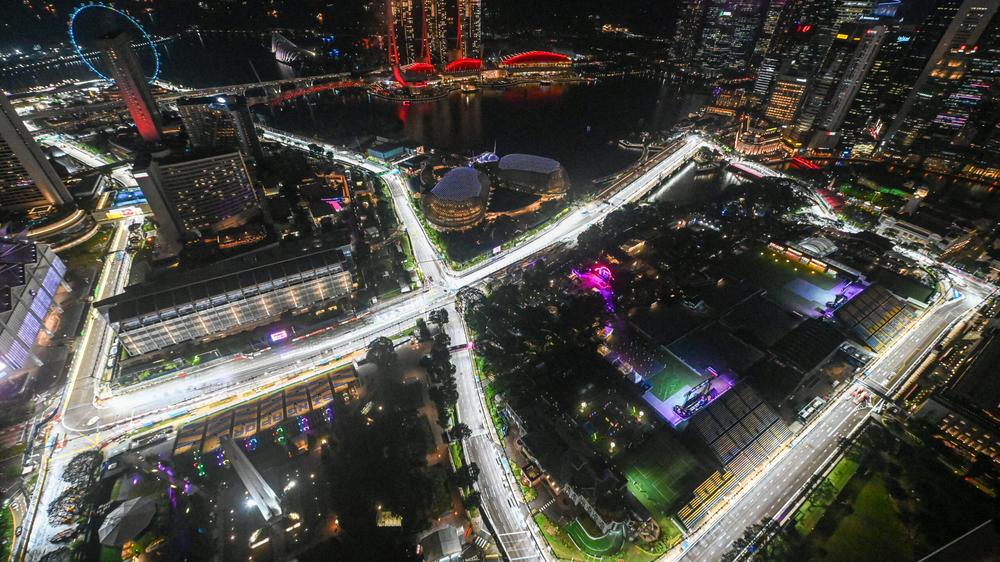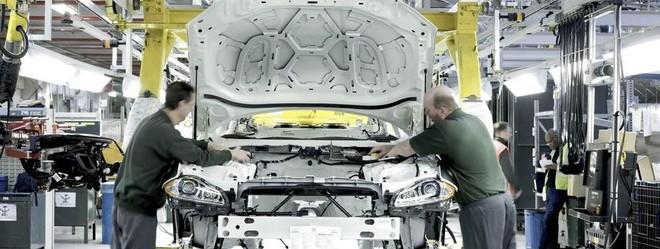Few modern F1 venues are as dazzling as the Marina Bay circuit in Singapore. If you watch the early practice or the young women of F1 Academy in their races, you'll get an idea of the street circuit's relationship to the city in daylight as it takes in landmarks and crosses the water. At night, the brilliant white ribbon of racetrack throws the rest of the surroundings into darkness. Unlike a Le Mans car, there are no headlights in F1.
Just over 1,600 lights are needed for the job, which got underway in mid-June. They're LED now, a switch made in 2023 that cut energy consumption by a noticeable 30 percent. The light itself is even carefully tuned—a color of 5,700 K and a color rendering index of 90 best replicate daylight for the drivers. Oh, and there can't be any flickering that could affect the TV broadcast. The results look spectacular, especially in 4K.
As for the racing this year? Perhaps not so much. Past Singaporean Grands Prix have tended to be action-packed—or even chaotic. In the inaugural 2008 race, Red Bull came away convinced that electromagnetic interference from an underground train line caused the failure of one of its race cars, as well as a sister car belonging to the team we now call Racing Bulls. Other teams remained worried about this phenomenon as late as 2015, although no similar failures had been recorded. For the record, Singapore's Land Transit Authority says there was no train track below the relevant corner of the circuit—the nearest train tunnel is more than 600 feet away (200 m) and 32 feet (10 m) below ground level.
The following year gave us Crashgate. Back then, the team you know as Alpine was called Renault, and the man in charge, then as now, was the "colorful" Flavio Briatore—colorful being an adjective a writer uses when another word might run foul of the lawyers. Then, as now, the team wasn't having a great year, and that's when it occurred to someone that if their second driver, Nelson Piquet Jr., intentionally crashed and brought out a safety car, they could pit their lead driver Fernando Alonso before the chaos and leapfrog to the front.
The scandal became public the following year when Piquet was dropped halfway through the season, and he owned up. In the fallout, Briatore was issued a lifetime ban from the sport, with a five-year ban for the team's engineering boss, Pat Symonds. Those were later overturned, and Symonds went on to serve as F1's CTO before recently becoming an advisor to the nascent Cadillac Team.
Even without possible RF interference or race-fixing, past Singaporean races were often interrupted by the safety car. The streets might be wider than Monaco, but the walls are just as solid, and overtaking is almost as hard. And Monaco doesn't take place with nighttime temperatures above 86°F (30°C) with heavy humidity. Those are the kinds of conditions that cause people to make mistakes.
But in 2023, a change was made to the layout, the fourth since 2008. The removal of a chicane lengthened a straight but also removed a hotspot for crashes. Since the alteration, the Singapore Grand Prix has run caution-free.
What about the actual race?
Last time, I cautioned McLaren fans not to worry about a possibly resurgent Red Bull. Monza and Baku are outliers of tracks that require low downforce and low drag. Well, Singapore benefits from downforce, and the recent upgrades to the Red Bull have, in Max Verstappen's hands at least, made it a competitor again.
The McLarens of Oscar Piastri (leading the driver's championship) and Lando Norris (just behind Piastri in second place) are still fast, but they no longer have an advantage of several tenths of a second against the rest of the field. They started the race in third and fifth places, respectively. Ahead of Piastri on the grid, Verstappen would start the race on soft tires; everyone else around him was on the longer-lasting mediums.
But pole position belonged to Mercedes' George Russell, who drove off at the start, fell into the zone, and crossed the line an hour and 40 minutes later, looking hot and tired in first place.
Verstappen's soft tire gamble didn't work. Instead of rocketing past Russell at the start, he barely kept second place, making contact briefly with Norris and damaging the McLaren's front wing. That contact pushed Norris into Piastri, who emerged fourth and with an audible chip on his shoulder over his perceived harsh treatment. (One imagines that after the race, having seen the footage, he might be a little less upset.) They finished in this order, clinching the World Constructor's Championship in the process.
About the only really exciting thing that happened on screen was Fernando Alonso's battle to get his Aston Martin past the Racing Bulls of Isack Hadjar. Hadjar fought his position for quite some time before Alonso made his way through, declaring that the other driver should get "the trophy for hero of the race" for defending a position outside of the points.
The driver's title is still led by Piastri on 336 points. Norris is a little closer behind at 314—this is less of a margin than at the end of the last race, but barely, and it will require Norris finishing several spots ahead of Piastri at the remaining races to upset the pecking order.
That makes a Verstappen championship a long shot. The four-time champion is in third place but 66 points behind Piastri, with 25 on offer for a win. Without one or two pointless races for both McLaren drivers, catching them seems impossible.

 Jaguar Land Rover, la produzione riparte dopo l’attacco informatico
Jaguar Land Rover, la produzione riparte dopo l’attacco informatico